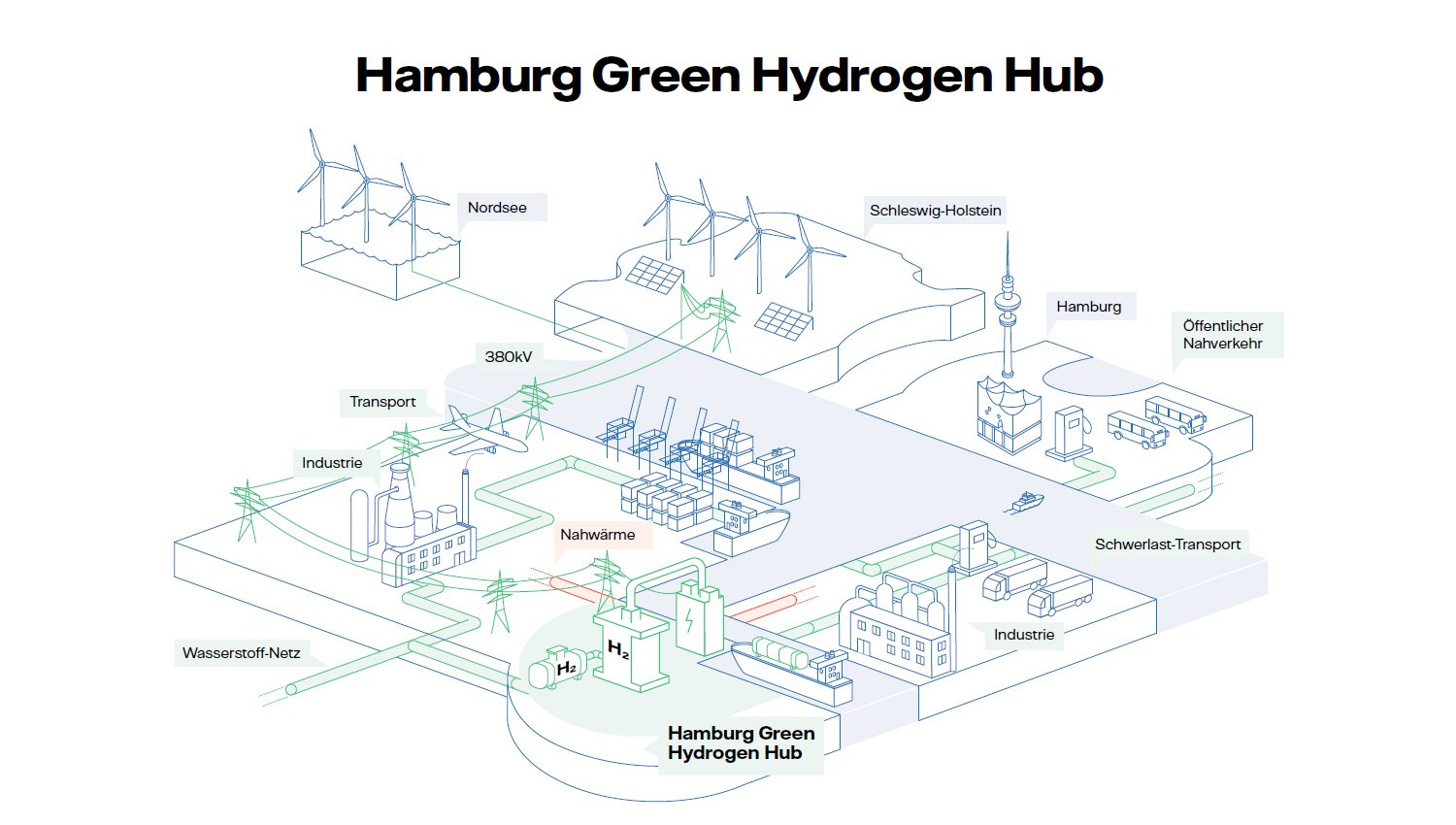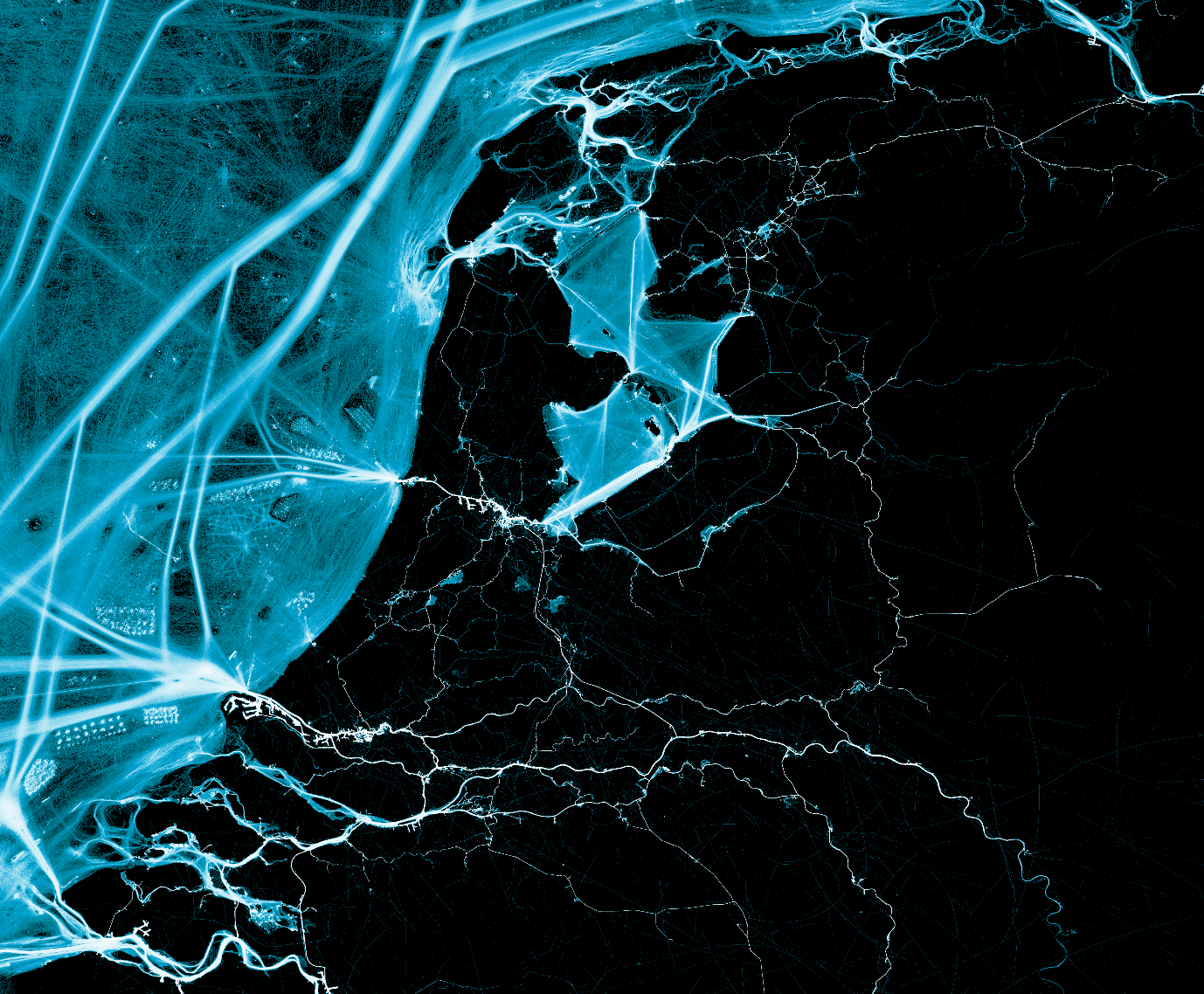
The controversial Hamburg-Moorburg coal-fired power station is being repurposed. If it is up to the Hanseatic city, it will be converted into a hydrogen power station with a capacity of 100 megawatts. This would make it one of the largest electrolysis plants in Europe and the world.
The German city of Hamburg announced this last Friday together with a consortium made up of the energy companies Wärme Hamburg, Gasnetz Hamburg, Vattenfall and Shell and Mitsubishi Heavy Industries. The aim is to have the plant ready by 2025. After that, according to the consortium, there will still be plenty of room for further expansion.
Wind energy
The choice for the location in Hamburg is logical and surprising at the same time. It is logical because the site is conveniently located near a number of large on- and offshore wind power plants (with which the hydrogen is made). Moorburg also has an excellent connection to the German gas grid (through which the hydrogen will be transported). Plus there is a lot of heavy industry nearby (which can use the hydrogen as an alternative fuel).

The choice is surprising because the construction of the Moorburg coal-fired power station turned out to be an enormous blunder. The Swedish company Vattenfall invested around 3 billion euros in a power station that in the end only operated for five years (2015-2020). The original goal was that it would run until 2038. The plant had to be shut down a few weeks ago owing to the green energy transition. There is currently an overcapacity on the German electricity market due to the high growth rates of wind and solar power. It was an auction that forced the closure of the Moorburg plant for which Vattenfall was compensated. Later this year, 10 other coal-fired plants are set to close.
5 gigawatts in 2030
The new hydrogen power station is not a sure thing as yet. Friday’s statement is a declaration of intent. But Hamburg seems determined to go ahead with the plans. “For an electrolysis plant of this size, there is no better place than Moorburg,” says Michael Westhagemann, Hamburg’s senator for economic affairs.
Westhagemann is a party-less politician who has been trying for years to make Hamburg a hub for the hydrogen industry. The plan for a plant with a capacity of 100 megawatts has been around since 2019. The only thing missing was a partner and a location.
Hamburg is joining forces with the other states along the North Sea and Baltic Sea coast, namely Bremen, Mecklenburg-Western Pomerania, Lower Saxony and Schleswig-Holstein.
Their plans are being backed by the government in Berlin, which aims to increase hydrogen production to 5 gigawatts by 2030. This is much more than the power plant in Hamburg.
Hydrogen costs too much
Germany is cooperating with several other European countries on this. One of the important preconditions for the plans to succeed is that the gas grid must be adapted. German magazine Der Spiegel reported over the weekend that Berlin is currently working on draft legislation for this.
In the meantime, there are still many unsolved problems concerning green hydrogen. Technically speaking, plenty is possible. Yet the difficult part is that a lot of energy is lost in the process of converting wind power into hydrogen. Another major problem is that hydrogen production must be done on a certain scale to make it economically viable. At present, this is far from being the case. Which is why subsidies are needed.

The fact that the German government and others are nevertheless enthusiastic has to do with their steadfast ambition to be CO2 neutral by 2050. This is perfectly possible for cars using electric motors, which means that hydrogen is not needed, but this is much more difficult for aeroplanes or a steel factory, for example.
It is still unknown if there will be a subsidy for the project in Hamburg-Moorburg and, if so, how much. Most likely, the government in Berlin and/or the European Union, (which has a budget for this type of project – IPCEI, Important Project of Common European Interest), will be enlisted to help. The costs of the Hamburg hydrogen plant are estimated by Westhagemann to be in the three-digit millions.
You can read the whole press release here (in German).
Read the opinion piece by IO columnist Eugene Franken about hydrogen power in the Netherlands here.







